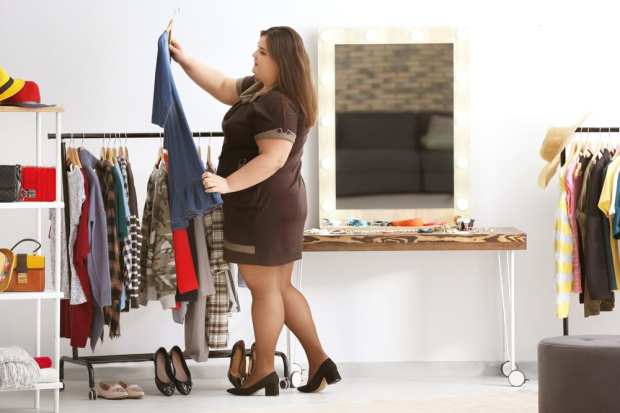Why Plus-Sized Fashion Doesn’t Have A Future

The fact that women’s fashion sizing is less than inclusive is not exactly a new issue. The average female shopper in the U.S. is a 14 or 16 – depending on whose numbers one is looking at, 35 percent to 60 percent of women are defined as “plus-size.” But the average store doesn’t carry plus sizes –14 is generally as large as it gets, which means a woman looking for a larger size will most likely have to find a specialty retailer.
Fashion designers notoriously prefer to design for a “perfectly petite” size four – though most fashion models are in fact a size or two smaller than that. The late Karl Lagerfeld once notoriously said that the closer a model’s physical resemblance to a clothes hanger, the better. Larger women, the explanation often goes, are more complex and difficult to design for, and to ensure that the clothes look exactly as intended, it’s safer to design for the very slender.
As a result, noted Alexandra Waldman, the co-founder and chief creative officer of Universal Standard, plus-sized women are often left to pick from the “best of the worst” when it comes time to shop for clothing. Because clothing for larger people isn’t simply designed to be bigger, she noted, but in many ways, it’s sub-par in terms of design standards and quality.
“For me, it was this trifecta of terribleness. You were either infantilized – you couldn’t buy a T-shirt that didn’t have a kitten or a puppy on it, or some sort of horrible French saying, or you were hyper-sexualized,” Waldman wrote for Quartz. “Your options were this kind of leopard-print bodystocking. The third branch on that trifecta was the very marmy stuff, fabrics that were the cheapest kind of synthetics to the point where you thought if you walked a little too quickly, you might set yourself on fire.”
Waldman was not a fashion designer by trade, but she was a fashion journalist, which meant she had a literal front-row seat to the world of cutting-edge apparel design – and a keen awareness that none of the beautifully designed and constructed clothing she saw was made for her size-20 frame.
She founded her apparel business, Universal Standard, with the idea that plus-sized clothing should not only be larger, but should offer consumers regular, fashionable clothing in the styles available at mainstream retailers.
“I wanted jeans, I wanted a cool jacket, and I wanted to wear my Adidas sneakers. I wanted to look like I was part of the real world,” Waldman wrote, noting that her desires were pretty familiar to plus-sized consumers everywhere, because they are the things that all consumers want. When she set about building Universal Standard, she didn’t set out to build a plus-size clothing brand – she set out to build a clothing brand for all shoppers.
To make that work, the company uses an innovative fitting approach, which Waldman described as micrograding sizes. Typical apparel brands start with a “perfect prototype size” – usually a six or a four – and then size up or down to make larger or smaller sizes. Within the straight range, while the fit might not be perfect, the relative gradation between sizes is small enough that it works to simply upsize or downsize.
But when applied to plus sizes, the distortions become much more obvious – for example, Bermuda shorts in a size six will look more like capris in a size 24. It requires a much finer gradation around fit, Waldman noted, to ensure that when something gets larger, the details remain properly fixed and focused so that the neckline lays properly, the desired lengths are preserved and the fabric moves optimally.
The point, said Waldman, is that regardless of a shopper’s size, she should be able to buy a garment that was designed to fit them – not tossed off as a plus-sized afterthought with dimensions that have run out of whack. Because while the need for more plus-sized clothes gets a lot of coverage, shoppers, in general, need better options for properly fitting items.
“I don’t think plus-size clothing has a future,” Waldman said. “The world doesn’t need another plus-size brand. I think what we need to do is take those two branches, the plus-size and the straight-size, and bind them back together and just start making clothes for women, for everyone.”
